10 Signs and Symptoms of Iron Deficiency


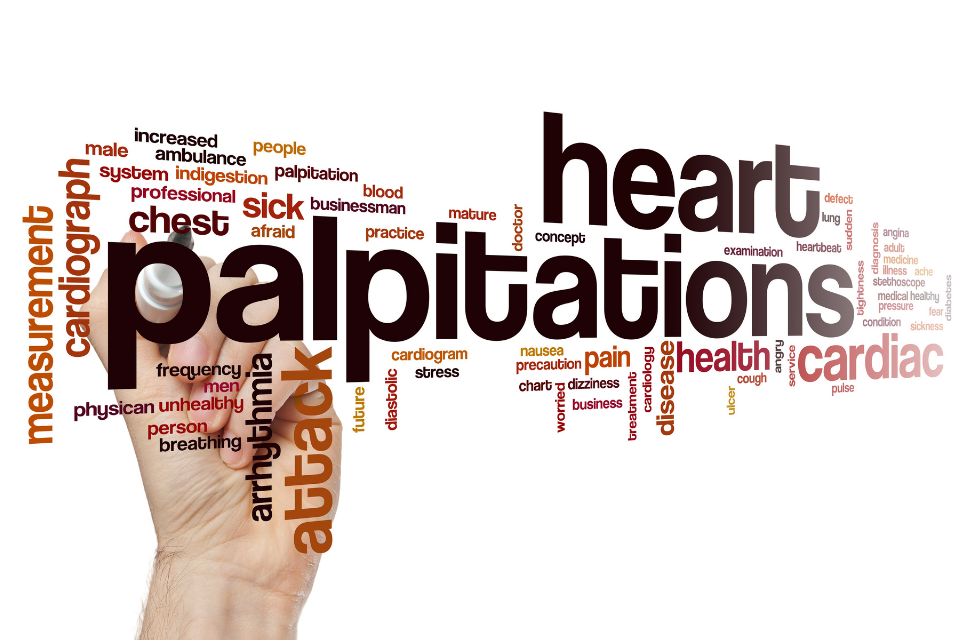



Iron is one of the essential minerals in our body. One of the major reason we need it is that it helps to transport oxygen throughout the body. Iron has other important functions, too. Iron is also necessary to maintain healthy cells, skin, hair, and nails
Iron is an important component of hemoglobin, a protein in red blood cells that carries oxygen and carbon dioxide from your lungs to transport it throughout your body. Hemoglobin represents about two-thirds of the body’s iron. If there is not enough iron, our body can’t make enough healthy oxygen-carrying red blood cells commonly known as RBC’s. A lack of red blood cells is called iron deficiency anemia. Iron-deficiency anemia is the most common worldwide among various kinds of anemia.
Without healthy red blood cells, your body can’t get enough oxygen. If you’re not getting sufficient oxygen in the body, you’re going to become fatigued. That exhaustion can affect everything from your brain function to your immune system’s ability to fight off infections. If you’re pregnant, severe iron deficiency may increase your baby’s risk of being born too early, or smaller than normal.
Talking about the common causes, iron deficiency mostly occurs due to the inadequate intake of iron. Some of the causes are listed below:
- A diet low in iron
- Internal bleeding
- Inability to absorb iron
- Inflammatory bowel disease
- An intestinal disorder called celiac sprue
- Chronic blood loss caused by any of the following:
- Abnormally heavy menstrual periods
- Bleeding into the urine, which is rare, or into the gastrointestinal tract, which is common; often, the blood loss is so small, it can only be detected with special testing
- Frequent blood donation
- A parasitic hookworm infestation
Whatever may be the cause, iron deficiency can result in unpleasant symptoms that can affect our quality of life. These include poor health, concentration and work productivity
Signs and symptoms of iron deficiency vary depending on the severity of anemia, how quickly it develops, depends on the age and current state of health. Also, in some cases, people experience no symptoms.
Listing down some of the common signs and symptoms which is be watched out for.
-
Extreme fatigue, tiredness, weakness.
Feeling very tired is one of the most common symptoms of iron deficiency, affecting more than half of those who are deficient.
Fatigue is far more than simply feeling a little sleepy. Fatigue is defined as a case of extreme exhaustion. And this can have a far-reaching impact on our overall health if the cause isn’t found and addressed. In the case of undetected anemia, as we know, our vital organs suffer oxygen loss, which can impair their function over time. Due to oxygen loss not only the vital muscles, organs impair their function, but also affects energy deprivation at a much lower level i.e. cells and tissues.
In addition, our heart which is one of the important muscle, must work harder to move more oxygen-rich blood around your body, which can make us tired.
Since tiredness is often considered a normal part of a busy, modern life, it’s very difficult to diagnose iron deficiency with this symptom alone. Hence its good be watchful of not only the type of tiredness occurring and but even on the duration of tiredness.
However, many people with iron deficiency experience low energy alongside weakness, feeling cranky, difficulty concentrating or poor productivity at work.
-
Paleness – Skin tone
Hemoglobin in our red blood cells is what gives our skin that healthy, rosy color. Due to the lack of iron, the human body cannot produce enough hemoglobin for the red blood cells to contribute to the rest of the body, which results in pale skin. Also, as the numbers of red blood cells become restricted, not enough reach the surface of the skin. Blood here, gets diverted away from the skin to supply the vital organs instead, making the skin pale. Though a pale complexion alone is not necessarily a sign of anemia, when combined with the other signs, it can be a good indicator.
When our eyelids are pulled down, inside layer should be a vibrant red color. If it is a very pale pink or yellow color, this may indicate that we are iron deficient.
Hence summarizing, no matter what our skin tone is, if the inside of the: lips, gums, finger nails, and the inside of the bottom eyelids are less red than usual, then definitely low iron is to be to blamed. This is often one of the first things doctors will look for as a sign of iron deficiency. However, it should be confirmed with a blood test.
-
Chest pain, fast heartbeat or shortness of breath
Hemoglobin enables your red blood cells to carry oxygen around the body. When hemoglobin is low in our body during iron deficiency, oxygen levels will also be low. As a result, our breathing rate will increase as our body tries to get more oxygen. This is the main reason for the shortness of breath. When your heart is beating too fast, it may not pump enough blood to the rest of your body. This can starve your organs and tissues of oxygen. Watch out if you find yourself out of breath doing normal, daily tasks that you used to find easy, such as walking, climbing stairs or working out, iron deficiency could be to blame.
Anemia, iron deficiency, malignancy, vitamin deficiency, and chronic blood loss may result in insufficient blood flow to the brain and manifest as lightheadedness
-
Headaches and Dizziness
Insufficient blood flow to the brain would sometimes indicate as lightheadedness, dizziness and headaches. This indication mainly is due to the blood vessels in the brain that can swell, causing pressure and headaches. And, this would be one of the side-effects of Iron deficient system. But this symptom seems to be less common compared to other symptoms. As mentioned earlier, although there are many causes of headaches, frequent, recurrent headaches and dizziness could be a sign of iron deficiency.
-
Heart Palpitations
A palpitation is a term that describes the feeling that occurs when a person can sense an abnormality in the normal beating and rhythm of the heart. These palpitations can be an isolated extra beat, or they can run together and last for prolonged periods of time. Each part of the heart has the potential to be irritable and cause an extra beat to occur. Moreover, short circuits in the electrical conduction system of the heart can cause “runs” of abnormal firing. But these can occur due to iron-deficiency as well.
Hemoglobin is the protein in red blood cells that helps transport oxygen around the body. In case of iron deficiency, low levels of hemoglobin mean the heart must work extra hard to carry oxygen.
This can lead to irregular heartbeats, or the feeling that your heart is beating abnormally fast. When your heart has to work harder, this can lead to several conditions: irregular heartbeats called arrhythmias, a heart murmur, an enlarged heart, or even heart failure.
However, these symptoms tend to be a lot less common. We would have to suffer from iron deficiency for a long time to experience them.
-
Dry and Damaged Hair and Skin
Iron has an essential component, an enzyme called ribonucleotide reductase that helps cell growth. Hair follicle cells can be particularly sensitive to decreasing levels of iron and may not be able to grow new cells as effectively when iron stores are low.
Dry and damaged skin and hair can be signs of iron deficiency. This is because when your body is iron deficient, it directs its limited oxygen to more important functions, such as organs and other bodily tissues. When skin and hair are deprived of oxygen, it can become dry and weak.
Most of the studies related to iron deficiency anemia and hair loss look at hair loss in women. Female pattern hair loss, also known as androgenetic alopecia, is the most common hair loss type in women.
Female pattern hair loss usually refers to thinning hair in the middle portion of the scalp. People with this hair loss pattern may also have thinning or receding hair on the hairline along their forehead.
It is completely normal for some hair to fall out during every day washing and brushing, but if there are losses in clumps or much more than normal, it may be due to iron deficiency.
-
Swelling and Soreness of the Tongue and Mouth
Sometimes just by looking inside or around our mouth, gives us an indication of whether a person is suffering from iron-deficiency anemia. Iron deficiency can also cause dry mouth, sore red cracks at the corners of the mouth or mouth ulcers. Glossitis is a condition that causes the tongue to become inflamed, and is characterized by several things when your iron levels are low. The tongue’s appearance can morph into multiple shades of red, and swell slightly in size. The surface of the tongue can smooth out and hide its natural texture, as well. Low hemoglobin in iron deficiency can cause the tongue to become pale, while lower levels of myoglobin can cause it to become sore, smooth and swollen. Myoglobin is a protein in red blood cells that supports the muscle that makes up the tongue.
-
Restless Leg syndrome
Iron deficiency has been linked to restless leg syndrome. Restless leg syndrome is a strong urge to move your legs at rest. It can also cause unpleasant and strange crawling or itchy sensations in the feet and legs. This is also called as RLS. And this is usually because of an uncomfortable sensation. It typically happens in the evening or night-time hours when the person is sitting or lying down. Moving eases, the unpleasant feeling temporarily.
As it usually gets worse during the night, the person might suffer to get good sleep. The causes of restless leg syndrome are not fully understood.
However, up to 25% of people with restless leg syndrome are thought to have iron-deficiency anemia and the lower the iron levels, the worse the symptoms.
-
Spoon-Shaped Fingernails
While brittleness can develop simply as a part of aging, if the nails seem to crack for no reason, this might be a sign of anemia.
As we know, Anemia is a condition where our body lacks enough hemoglobin, a protein that carries oxygen from your lungs to the rest of your body. While fatigue is the leading sign of anemia, this condition can also show itself through brittle or spoon-shaped nails — called koilonychia. This often starts with brittle nails that chip and crack easily.
A blood test can diagnose whether the brittleness maybe due to anemia or not. In later stages of iron deficiency, spoon-shaped nails can occur where the middle of the nail dips and the edges are raised to give a rounded appearance like a spoon. Brittle or spoon-shaped nails can be an indicator of more severe iron-deficiency anemia.
-
Other Potential Signs for iron deficiency
There are several other signs to tell that the iron in our body could be low. These tend to be less common and can be linked to many conditions other than iron deficiency.
Other signs of iron-deficiency anemia include:
- Feeling anxious: The lack of oxygen available to body tissues in iron deficiency may cause feelings of anxiety. However, this tends to improve or resolve as iron levels are corrected.
- Cold hands and feet: Iron deficiency means less oxygen is being delivered to the hands and feet. Some people may feel the cold more easily in general or have cold hands and feet.
- Strange cravings: A hankering for strange foods or non-food items is called “pica.” It usually involves cravings to eat ice, clay, dirt, chalk or paper and could be a sign of iron deficiency. It can also occur during pregnancy.
- More frequent infections: Because iron is needed for a healthy immune system, lack of it may cause you to catch more illnesses than usual
What is to be done if you are Iron Deficient?
We know that, every organ and tissue in our body needs oxygen to work. Red blood cells are the transport system that carries oxygen from our lungs to the rest of your body. When we are suffering from anemia, our body doesn’t have enough of these blood cells.
So, we need iron to make hemoglobin — a protein that helps our red blood cells carry oxygen. Without enough oxygen in our blood, and we may feel tired, weak, and short of breath.
Below are proven advice’s to be followed, when a human body is iron-deficient.
Eat Iron-Rich Foods
Always make sure that you are consuming more iron-rich foods. Some of them are mentioned below.
Animal-based sources of iron – Top animal-based sources of iron include:
- Liver (chicken, lamb)
- Fish (Sardines, Salmon)
- Red Meat (lamb)
- Egg (chicken)
- Duck
Plant-based sources of iron – Plant foods containing non-heme iron can still provide an adequate amount of iron for the body. Good sources include:
- Vegetables such as kale, broccoli, spinach and green peas
- Legumes (such as lentils, beans and chickpeas)
- Tofu
- Pumpkin seeds
- Nuts, especially cashews and almonds
- Wholegrain cereals such as oats or muesli, brown rice and quinoa
- Dried apricots
Dark Chocolates (It is best to consume chocolate with a minimum of 70% cocoa to get the maximum benefits)
Boosting the Iron Absorption
Importantly, eating vitamin C will help our body absorb iron better. Make sure vitamin C – rich foods, such as fruits, vegetables are eaten.
It may also be beneficial to avoid certain foods that can inhibit iron absorption when eaten in large amounts. These include tea, coffee and foods high in calcium such as dairy products and whole-grain cereals.
The Bottom Line
Iron is an important mineral that must be consumed regularly as your body cannot produce it on its own. Yet, it should be noted that some people need to limit their intake of red meat and other foods high in heme iron. However, most people are easily able to regulate the amount they absorb from food. Remember that if you don’t eat meat or fish, you can boost absorption by including a source of vitamin C when eating plant sources of iron
Although Iron-deficiency which is also called as anemia is the most common type of anemia worldwide, some people have obvious symptoms, while others experience none. This often depends on the severity of the anemia. Most forms of iron deficiency can be treated easily, usually through an iron-rich diet or iron supplements.
Our food should be our medicine and our medicine should be our food.






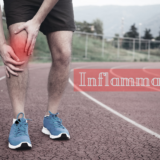
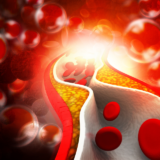
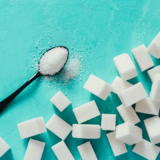
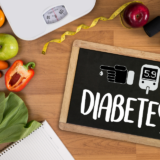




One comment
Antoniosmomi
December 25, 2021 at 12:21 am
I agree, a useful piece